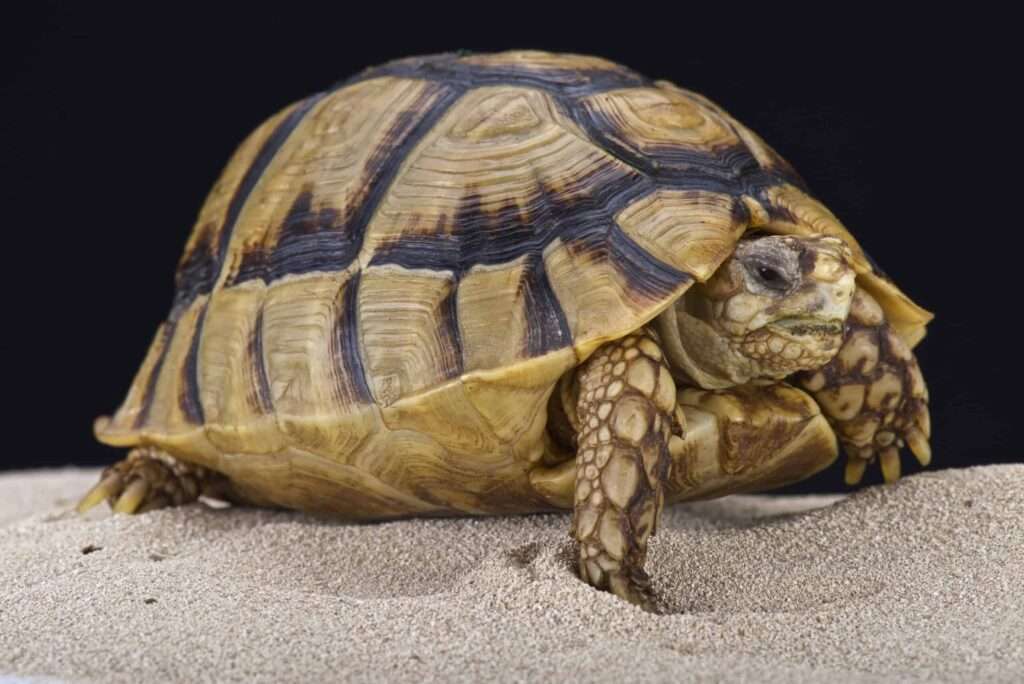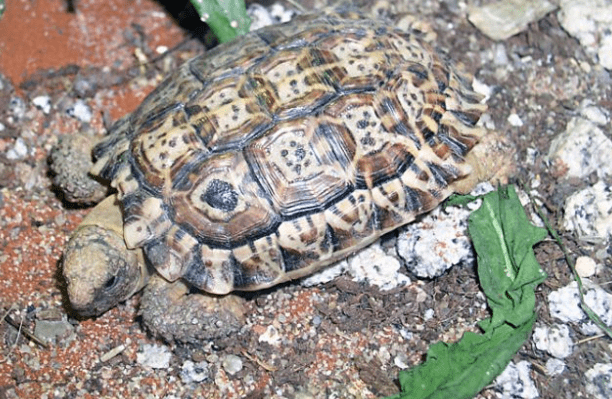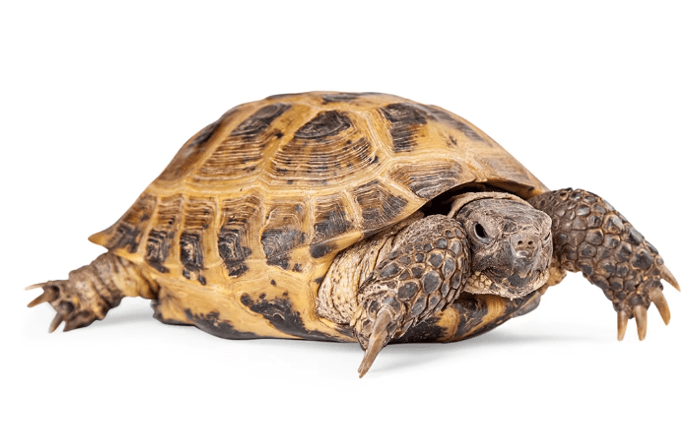
Description
The critically endangered Kleinmann’s tortoise (Testudo kleinmanni), also known as the Egyptian tortoise, Leith’s tortoise, and the Negev tortoise, belongs to the family Testudinidae of neck-hiding tortoises. Testudo negev, which lives in a similar environment but is virtually extinct, is comparable to Egyptian tortoises. Although the Egyptian tortoise’s shell can vary in colour from near grey to ivory to a bright golden hue, it is often a pale, dull yellow. Each scute’s front and sides are marked with dark brown or black spots on the carapace.
Habitat
Egyptian tortoises can be found throughout the Mediterranean coastal region of North Africa, from Libya to beyond Egypt’s Nile Delta. They are nearly extinct, but still exist in Libya’s Tripolitania and Cyrenaica. They live in desert and semi-desert settings that typically have flat, gravelly plains, strewn pebbles, shallow wadis, coastal salt marshes, brushy areas with thorny shrubs, and arid forests.
Behavior
The majority of an Egyptian tortoise’s activity occurs during warm weather, and it is at its lowest during extremely hot or cold months. They are most active in the middle of the day during cooler months, and only in the early morning or late afternoon during hot months. The rest of the day, they spend hiding in bushes or animal burrows.

Keeping as Pet
Tank
These tortoises are accustomed to live in extremely dry environments because their native habitat is sandy, thinly vegetated, and receives just 2 to 4 inches of precipitation annually. The temperature in their natural environment isn’t too hot, though—it averages out about 68°F and rarely rises above 85°F or so.
As wood is easier to control and hold heat, you should keep them in a wooden vivarium. The cage must be at least 2′ x 2′ x 2′ in size, but a larger cage makes it simpler to maintain varying temperatures throughout the vivarium.
Temperature
With one exception, the tank should be between 75 and 85 degrees. The temperature in this area should be kept approximately 90°F on the end designated for basking. To simulate the dip in temperature that these reptiles would experience in their natural habitat, the temperature inside the tank must decrease towards the end of the day. You can accomplish this by simply turning off all lights and heating devices, or you can use dimmers.
Diet
These animals are mostly vegetarians, though they will occasionally munch on insects. In the wild, they consume grasses, broadleaf plants, and flowers, favouring saltwort and sea lavender in particular. There’s no need to carry crickets home because they often thrive on a plant-based diet.
Four times a week, you can provide them with mixed greens and grass hay. By adding hibiscus leaves, flowers, or sea lavender leaves to the mixture, you may change it up and give the animals’ diets more fiber. However, be cautious with the greens you serve them. Any oxalic acid-rich plants, such as spinach, parsley, and rhubarb, might harm the kidneys or bladder. Offer them vegetables like dandelions, leafy salads, kale, and watercress as a substitute. As a special treat from time to time, you can also feed them carrots or bell peppers.
Table





